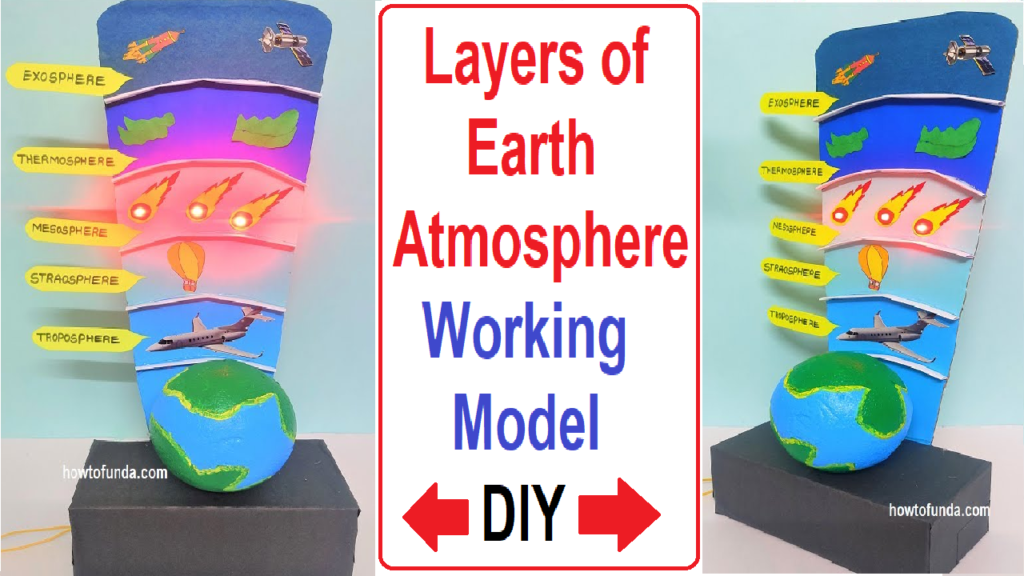The Earth’s atmosphere consists of several distinct layers, each with its own unique characteristics and properties.
Starting from the surface and moving upwards, the layers of the Earth’s atmosphere are as follows:

Troposphere:
The troposphere is the layer closest to the Earth’s surface and extends up to an average altitude of about 8 to 16 kilometers (5 to 10 miles). This layer is where most weather phenomena occur, such as clouds, rain, snow, and thunderstorms. As you move higher in the troposphere, the temperature generally decreases.
Stratosphere:
Above the troposphere is the stratosphere, which extends from about 16 to 50 kilometers (10 to 31 miles) in altitude. The stratosphere is characterized by the presence of the ozone layer, which absorbs and protects the Earth’s surface from harmful ultraviolet (UV) radiation from the Sun. Unlike the troposphere, the temperature in the stratosphere increases with altitude.
Mesosphere:
The mesosphere is the layer above the stratosphere and extends from about 50 to 85 kilometers (31 to 53 miles) in altitude. In the mesosphere, the temperature starts to decrease again with altitude, reaching extremely cold temperatures.
Thermosphere:
The thermosphere is located above the mesosphere and extends up to about 500 kilometers (311 miles) in altitude. This layer is characterized by a rapid increase in temperature with altitude due to the absorption of high-energy solar radiation. The International Space Station (ISS) orbits within the lower part of the thermosphere.
Exosphere:
The exosphere is the outermost layer of the Earth’s atmosphere, and it extends beyond the thermosphere. It gradually merges with the space environment. In the exosphere, gas molecules are very sparse, and collisions between particles are rare. The exosphere is where some artificial satellites orbit the Earth.

